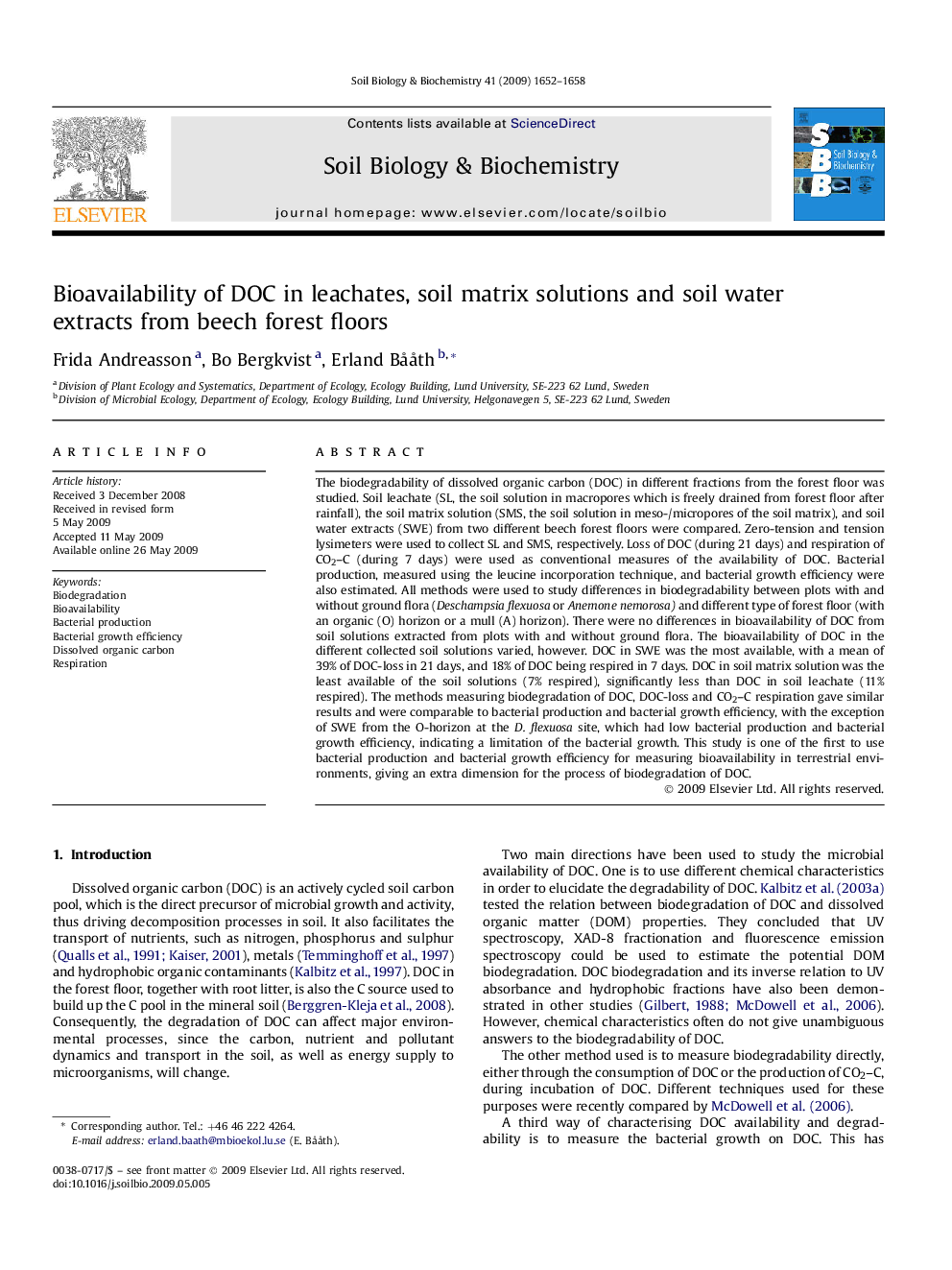| کد مقاله | کد نشریه | سال انتشار | مقاله انگلیسی | نسخه تمام متن |
|---|---|---|---|---|
| 2026381 | 1070028 | 2009 | 7 صفحه PDF | دانلود رایگان |

The biodegradability of dissolved organic carbon (DOC) in different fractions from the forest floor was studied. Soil leachate (SL, the soil solution in macropores which is freely drained from forest floor after rainfall), the soil matrix solution (SMS, the soil solution in meso-/micropores of the soil matrix), and soil water extracts (SWE) from two different beech forest floors were compared. Zero-tension and tension lysimeters were used to collect SL and SMS, respectively. Loss of DOC (during 21 days) and respiration of CO2–C (during 7 days) were used as conventional measures of the availability of DOC. Bacterial production, measured using the leucine incorporation technique, and bacterial growth efficiency were also estimated. All methods were used to study differences in biodegradability between plots with and without ground flora (Deschampsia flexuosa or Anemone nemorosa) and different type of forest floor (with an organic (O) horizon or a mull (A) horizon). There were no differences in bioavailability of DOC from soil solutions extracted from plots with and without ground flora. The bioavailability of DOC in the different collected soil solutions varied, however. DOC in SWE was the most available, with a mean of 39% of DOC-loss in 21 days, and 18% of DOC being respired in 7 days. DOC in soil matrix solution was the least available of the soil solutions (7% respired), significantly less than DOC in soil leachate (11% respired). The methods measuring biodegradation of DOC, DOC-loss and CO2–C respiration gave similar results and were comparable to bacterial production and bacterial growth efficiency, with the exception of SWE from the O-horizon at the D. flexuosa site, which had low bacterial production and bacterial growth efficiency, indicating a limitation of the bacterial growth. This study is one of the first to use bacterial production and bacterial growth efficiency for measuring bioavailability in terrestrial environments, giving an extra dimension for the process of biodegradation of DOC.
Journal: Soil Biology and Biochemistry - Volume 41, Issue 8, August 2009, Pages 1652–1658